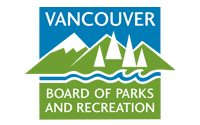What you need to know
The Pacific Great Blue Herons are back for the 25th consecutive year.
The Pacific Great Blue Herons have returned to the colony at the Park Board office at 2099 Beach Avenue.
Last year added 68 new fledglings to the colony, an increase from 61 the year before.
Our high-definition Heron Cam takes you inside the nests of one of North America’s largest urban great blue heron colonies from March until the end of the summer breeding season.
Take control of the camera for one minute at a time and zoom into specific nests.
Photos, questions, want to learn more?

Let’s keep talking! #HeronTalk External website, opens in new tab
Stanley Park Ecology External website, opens in new tab

Watch their courtship and mating rituals, nest building, egg laying, and fending off eagle attacks
What to watch for and how to interpret what you see
 Help support the heron colony
Help support the heron colony
These herons are a species at risk in Canada and the Stanley Park colony is a vital part of the south coast population. One-third of great blue herons worldwide live around the Salish Sea.
The Park Board, along with our friends at Stanley Park Ecology, help sustain the heron population through monitoring, stewardship, and education.
Help Stanley Park Ecology protect, monitor, and sustain the Pacific Great Blue Heron colony by adopting a nest.
Adopt a nest External website, opens in new tab
Read SPES’s Stanley Park Heronry Annual Report External website, opens in new tab
Heron Cam supports the Park Board’s Biodiversity Strategy and the Vancouver Bird Strategy.
